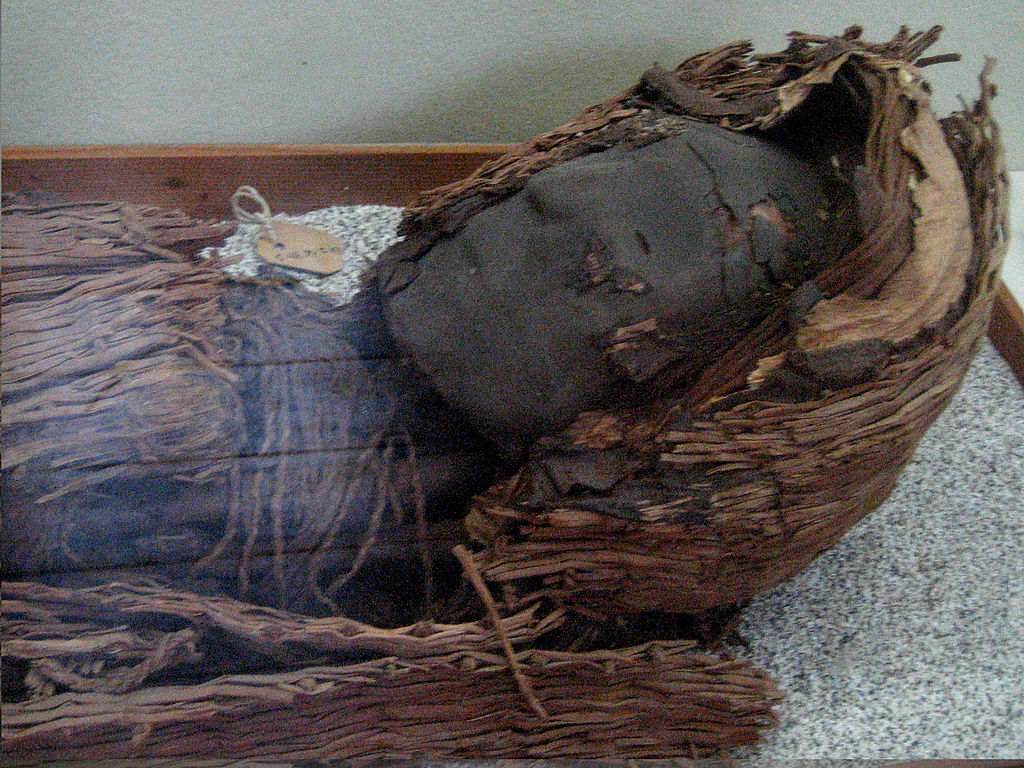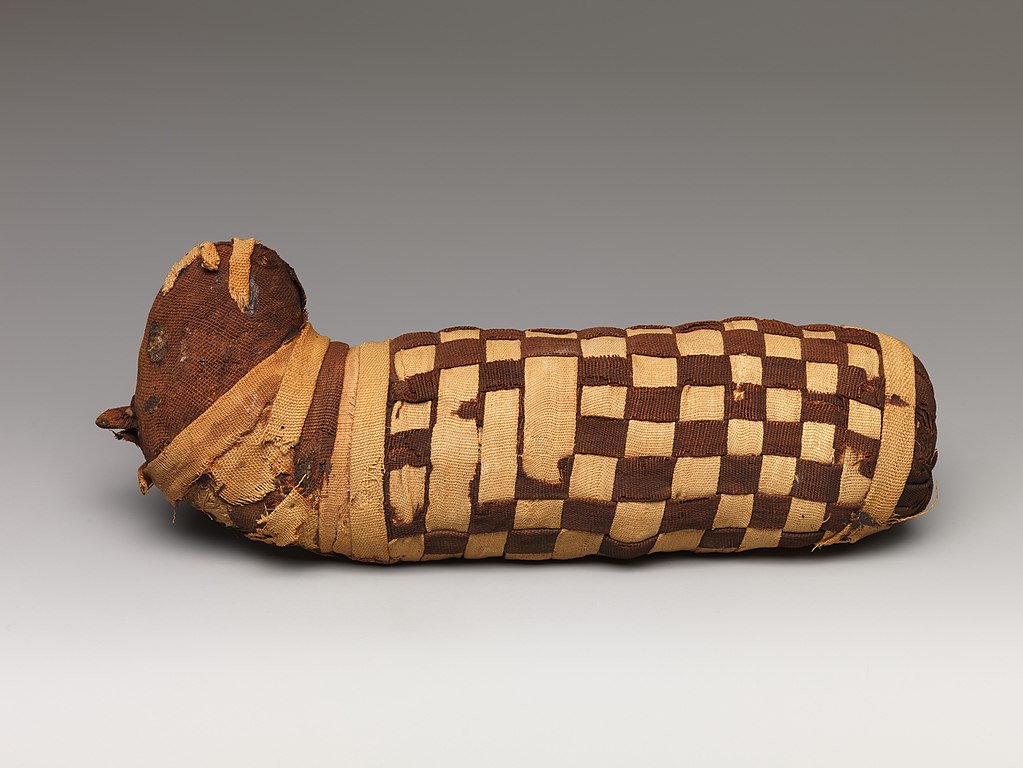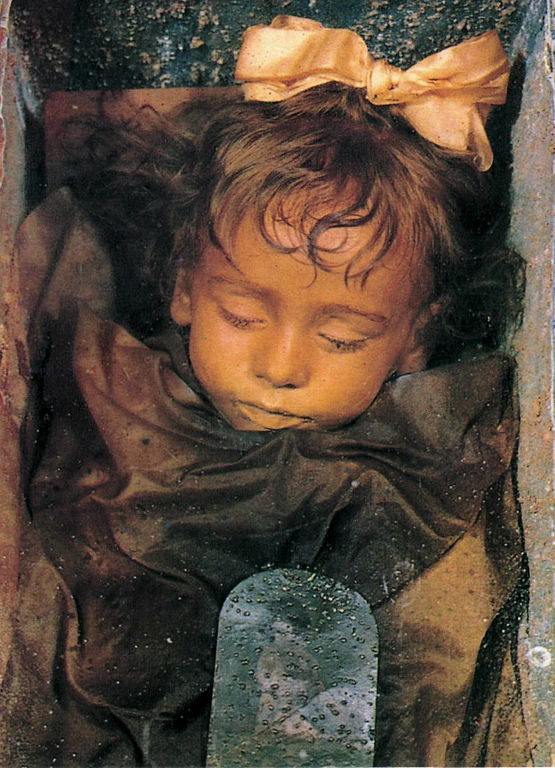What do We Know about Mummies?
This time I wanted something new on my blog. I read a lot about mummies and the process of making them and I decided to share this knowledge with you. For me, it was a really amazing thing. It's not about keeping the body safe from decomposition. It's something more than that. Most of the time (when people make a mummy) it's about making sure that the body is going to be intact so the soul of the dead can have the home even after death - in another life, in some another world. It's pure spirituality. So let's see how the different cultures made their own mummies.

When we talk about mummies, we usually think about famous mummies from Ancient Egypt. Someone can even think about a famous film with that name. However, mummies are an interesting phenomenon, and some of them are even older then mummies in Egypt. Also, they can be found in so many places all around the world. There are two ways of making mummies. They can be made by a human hand or by nature.
The oldest mummies in the world made by human hands
The process of making mummies is called mummification. First culture which knew about this process was culture which we today call Chinchorro, from northern Chile. They lived from 7,000 to 1,500 BC and we don’t know a lot about them. However, they were first people who made mummies and archaeologists discovered them in 1917, but they didn’t know a lot about them in that time. In 1983 they discovered graveyard with 96 mummies and after that they started to explore more.

Process of mummification in Chinchorro culture
They had a unique process of mummification. Chinchorro people used to cut the stomach of the dead person and take everything out. They also removed the brain out of the skull. The next step was taking the skin and muscles out of the body. The sticks were used to make spine, legs, and hands stronger and to prevent breaks. Instead of the muscles, they put clay to make the shape of the body again. After that, they put back removed skin. The skin was treated with ash cream and then the body was ready for a face mask and it was colored in black or red. Also, they used to put the wigs on mummies and make them look like they are alive. Scientists believe that bodies were kept out of the graves a while. After some days mummies were put in the tombs with a lot of tools (primarily fishing tools). Chinchorro people believed in life after death and they wanted to make sure that their dead will have everything they would need for next existence.
Mummies from Egypt
In Ancient Egypt mummies were made by a special team of people who were experts in this job. Yeah, that was a profession. That process of making mummy was called embalming. This is a very long and difficult process. People who were doing that had some kind of scientific knowledge and they were also respected as some kind of artists. The first man who actually mentioned and explained the process of embalming in Ancient Egypt was Herodotus. After 2500 years scientists proved that he was right.
The special place for this work was on the western shore of the Nile. That was a special place because they believed that it was connected with death. Experts for the embalming used natron (a mixture of Sodium carbonate decahydrate (Na2CO3•10H2O) and Sodium bicarbonate ( NaHCO3 ) to wash the body of the dead and prepare it for the following process. The natron is a substance which can dry out the wetness so it was really useful in the process of embalming. The wetness and organs could provoke decomposing so fast. Because of that skin was treated with natron and organs were removed from the body.
Egyptians removed the brain through the nose with a special tool (bronze hook). This organ was not important for them and they used to throw little pieces of it which they took out through the nose. After that, they made cut on the belly and took out other organs except heart and kidneys. Other organs were processed separately. They washed inside of the body with palm wine and the empty space was filled by straws. The whole body was covered with dry natron (some scientists think maybe with more than 200 kg of natron). The body was left for 40 days and when the process of dehydration was over, the body was ready for wrapping. They took out the natron and put different materials (textile, scobs, and mud). The skin was treated with fragrant oil and hot pine resin which was used to prevent mildew. Inside of the bandages, Egyptians put talismans and sacred words and resin was used to make the mummy stronger and resistant. They put decorated masks on the faces of dead and wigs on their heads and instead of eyes they used stones or false eyes. The whole process lasted around 70 days.

In Egypt animals could also become the mummies. People made them because they wanted to offer them as gifts to the gods or they wanted to send them to the next life together with their dead (as pets or to be their food). Some of them were also adored as sacred animals (for example bulls).

Mummies from the other parts of the world
Incan culture also knew how to make mummies. They removed organs and skin from the body and put the resin, which protected mummy from the decomposing. Aborigines also have their mummies. Scientists couldn’t examine those mummies because of respect for their dead. Aborigines still worship their mummies and for them, they are something so valuable and holy. We know only one thing ― they used to dry the bodies on the sun or on the fire.

If someone thought that mummies could be found only far away from Europe, it’s not like that. There are around 8000 mummies in Italy (especially on Sicily). Some of them were made in a natural way, because of dry air. However, Rosalia Lombardo is mummy from Sicily which was made by human hand. She was two years old when she died and her father (doctor) wanted to save her body. Scientists discovered that he used a mixture of formalin, glycerin, zinc, and salicylic acid to keep her body intact.

Bodies of Abraham Lincoln and Lenin also became the mummies. The body of Lincoln was preserved so people could see it during the 12˗days˗long procession all over the country. Lenin’s body was preserved and exposed to the public audience. The reason was simple ― admirers of his political ideas wanted to show to the people that he is still present.
Natural mummies

Thank you for reading. I hope it was interesting. Mummies are an amazing phenomenon but we should not forget that they were alive once, they were people just like we are, and they had their own lives. For people who made them they are sacred and their bodies were preserved so they can continue their existence in some other world.

References:
1. Egyptian Mummies by C Andrews (London, 1984);2. Mummies, Disease and Ancient Cultures by A Cockburn et al. (eds.) (Cambridge, 1998);
3. Wikipedia;
4. Making the Dead Beautiful: Mummies as Art

Agree !! Mummies are extremely fascinating!!
They tell their own story... shows that history is not just from text!!!
Yeah, we can learn a lot from them. Who they were, how they lived, how they understood the life and death.
I like to be a friend
The major thing i know about mummies is they originate from egypt and is a method to bury late phoaroh or there royalty.but thanks for the piece of info
Well, a lot of people think only on Egypt, but you can find mummies all around the world.
You received a 10.0% upvote since you are not yet a member of geopolis and wrote in the category of "geopolis".
To read more about us and what we do, click here.
https://steemit.com/geopolis/@geopolis/geopolis-the-community-for-global-sciences-update-4
Nice product
wow i guess we learn everyday, i always think that mummy only have to do with preserving and keeping dead body only practiced and known in Egypt, well thank you for your information, you must have really gone through a lot of research and history, nice work.